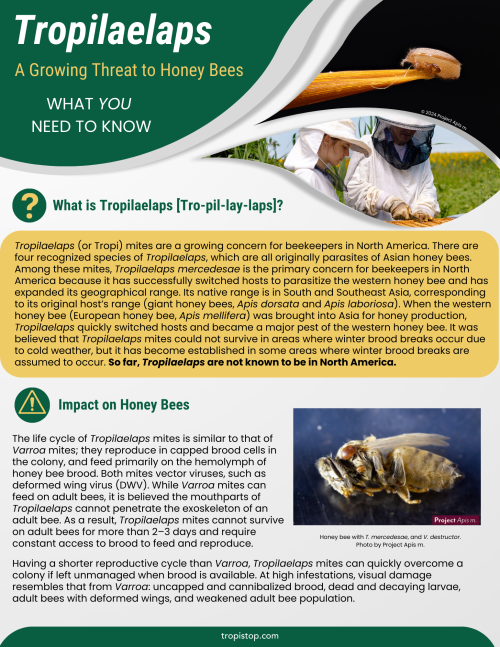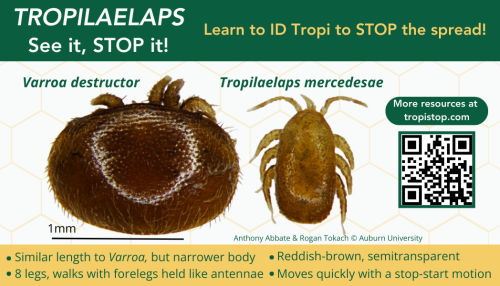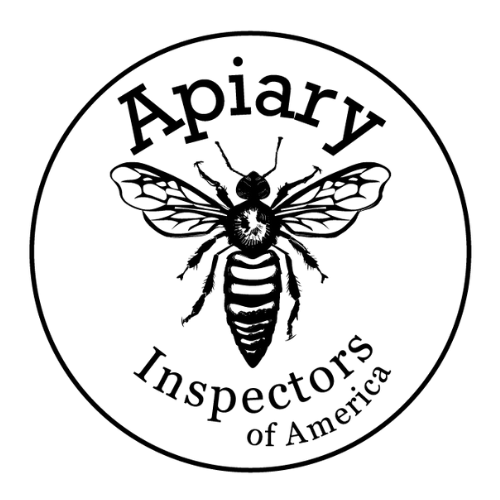What is Tropilaelaps?
Tropi on brood. Permission by SYZYGY Media Collaborative
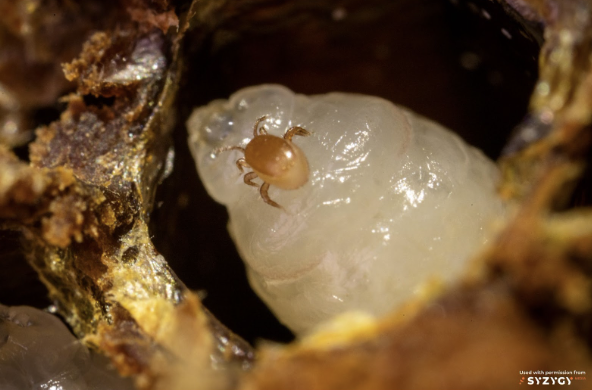
Tropilaelaps (or Tropi) mites are a growing concern for beekeepers in North America. There are four recognized species of Tropilaelaps, which are all originally parasites of Asian honey bees. Among these mites, Tropilaelaps mercedesae is the primary concern for beekeepers in North America because it has successfully switched hosts to parasitize the western honey bee and has expanded its geographical range. Its native range is in South and Southeast Asia, corresponding to its original host’s range (giant honey bees, Apis dorsata and Apis laboriosa). When the western honey bee (European honey bee, Apis mellifera) was brought into Asia for honey production, Tropilaelaps quickly switched hosts and became a major pest of the western honey bee. It was believed that Tropilaelaps mites could not survive in areas where winter brood breaks occur due to cold weather, but it has become established in some areas where winter brood breaks are assumed to occur. So far, Tropilaelaps are not known to be in North America.
Impact on Honey Bees
Honey bee with T. mercedesae, and V. destructor. Photo: Project Apis m
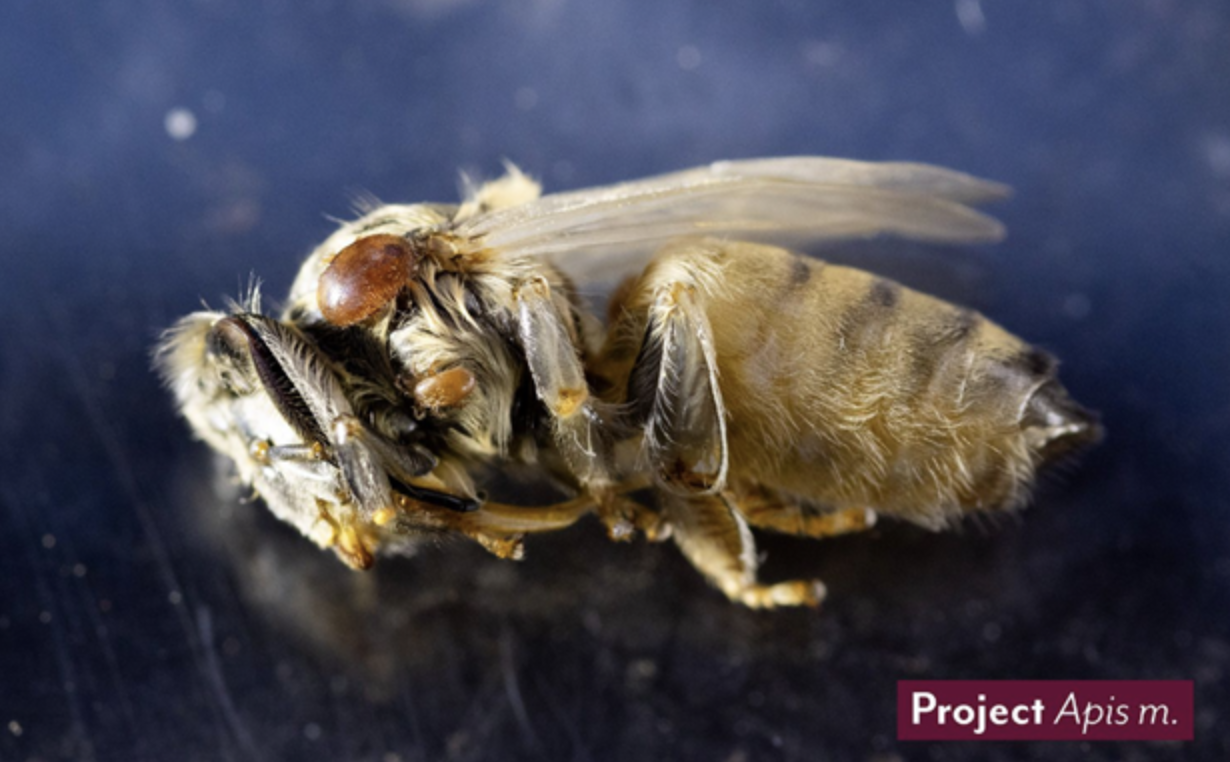
The life cycle of Tropilaelaps mites is similar to that of Varroa mites; they reproduce in capped brood cells in the colony, and feed primarily on the hemolymph of honey bee brood. Both mites vector viruses, such as deformed wing virus (DWV). While Varroa mites can feed on adult bees, it is believed the mouthparts of Tropilaelaps cannot penetrate the exoskeleton of an adult bee. As a result, Tropilaelaps mites cannot survive on adult bees for more than 2–3 days and require constant access to brood to feed and reproduce.
Having a shorter reproductive cycle than Varroa, Tropilaelaps mites can quickly overcome a colony if left unmanaged when brood is available. At high infestations, visual damage resembles that from Varroa: uncapped and cannibalized brood, dead and decaying larvae, adult bees with deformed wings, and weakened adult bee population.
Identifying Tropi See it, STOP it!
Varroa Mite (L) vs Tropi Mite(R)
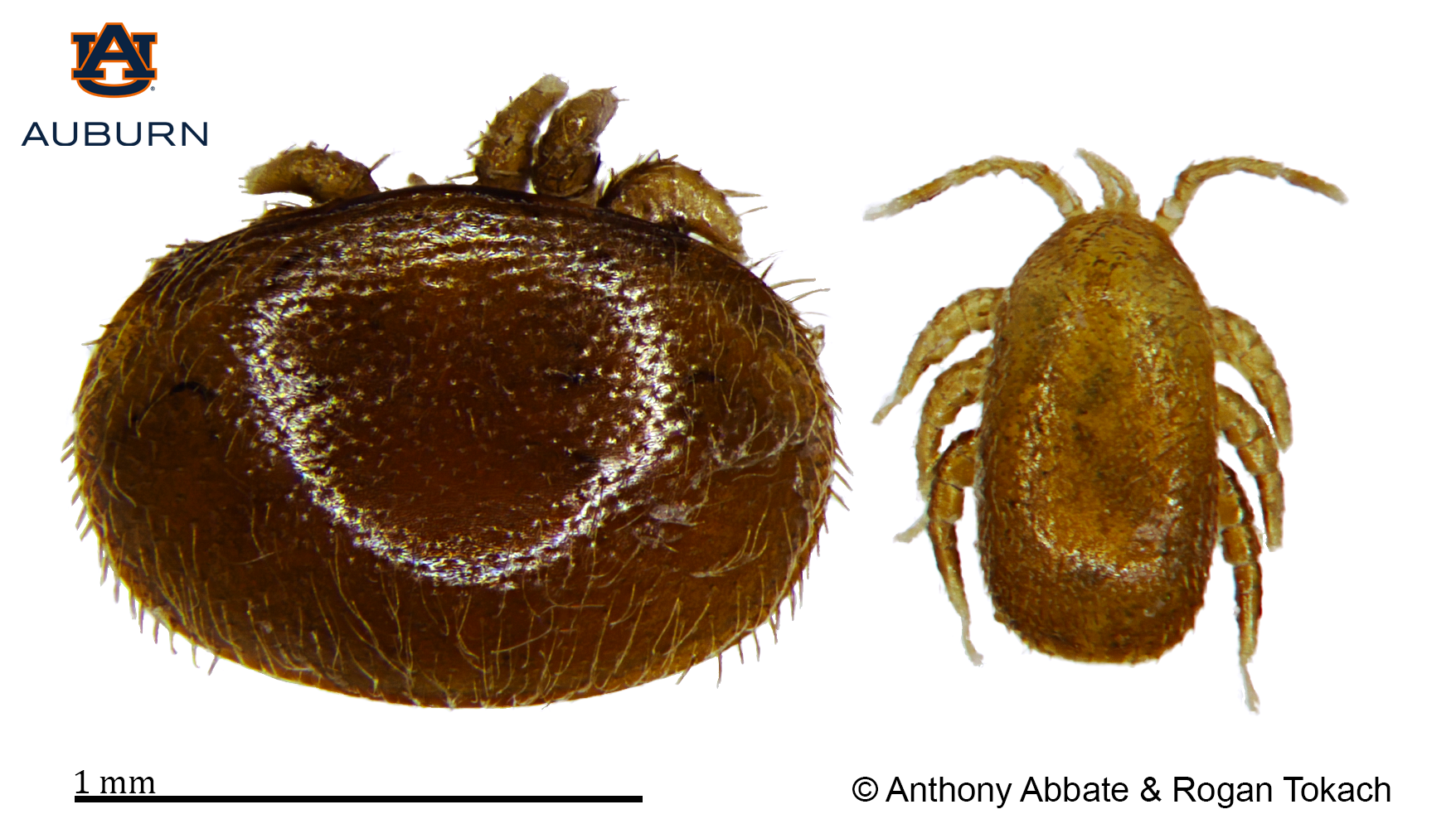
Tropilaelaps mites are smaller than Varroa mites. Their length is similar to that of Varroa mites (~1 mm), but they are only about ⅓ as wide. They may be seen in older brood cells that the bees have uncapped, or running over the comb surface, with a stop-start motion. Although they can be seen with the naked eye, they are difficult to spot due to their small size, making them easily missed by the untrained beekeeper.
Tropi infestation can be similar to those caused by other bee pathogens or pests.
What to do if you Suspect Tropi
Visual identification of Tropilaelaps can be challenging and there are many look-alike species that can be present in a honey bee colony, such as pollen mites, Braula, and male Varroa mites. If you notice an unusual mite during routine Varroa mite monitoring (sugar shake, alcohol wash, sticky board), report suspect specimens to your local state/provincial/territorial authority. Take a picture and make sure to collect the specimen for further confirmation. Specimens can be put into a small container or placed in a vial of alcohol.
Contact the local authorities
AIA:Apiary Inspectors of America - Inspection Services
State Plant Regulatory OfficialsState Plant Regulatory Officials - NAPIS Query (purdue.edu)
By spreading the word, we can help STOP Tropi in its tracks. Tropi is not thought to be in the US yet; let’s work together to safeguard our pollinators from this emerging threat.
Tropi Resources
HoneyBeePests.org/tropi
Visit honeybeepests.org/tropi for more information and downloadable resources.
2024 Tropilaelaps Training in Thailand 2024 Documentary
Sign up for the Pollinator Listserv
Subscribe to the Pollinator Listserv and you will be able to send and receive pollinator-related messages, like honey bee health issues, to other individuals interested in the field.
sign up